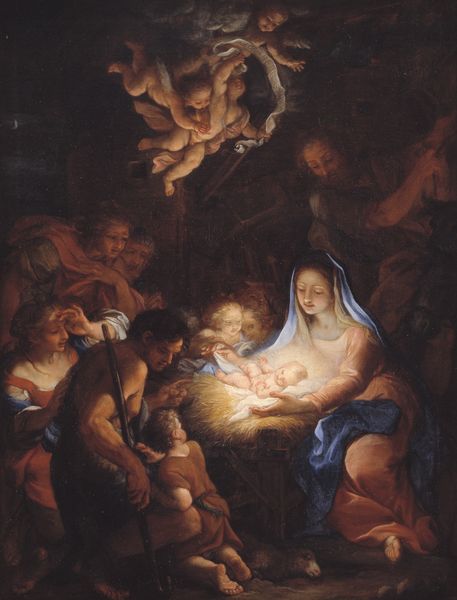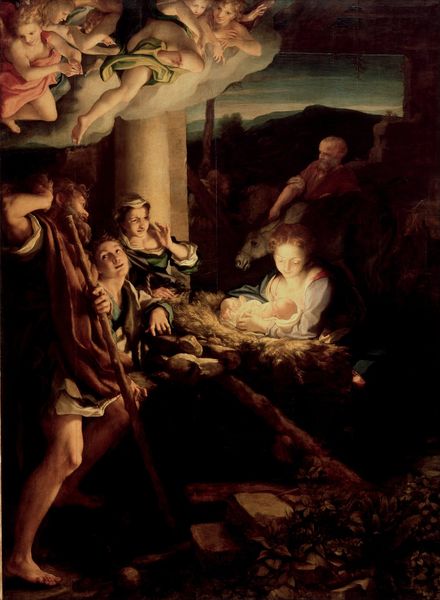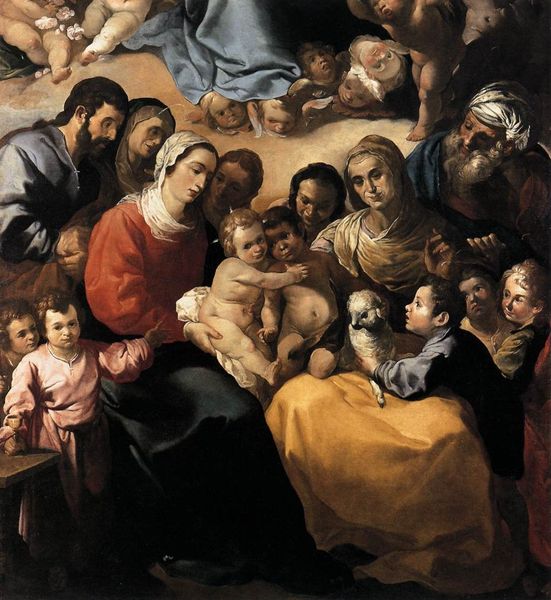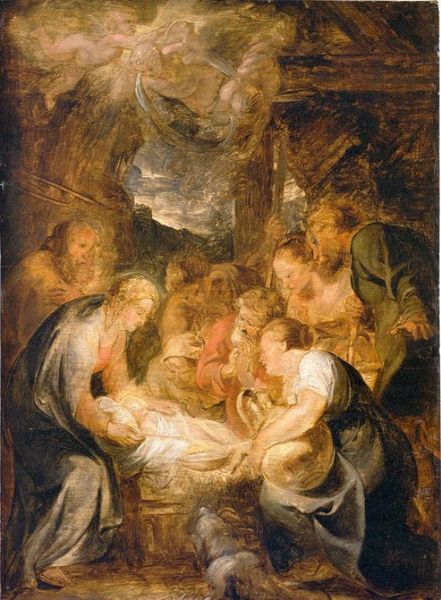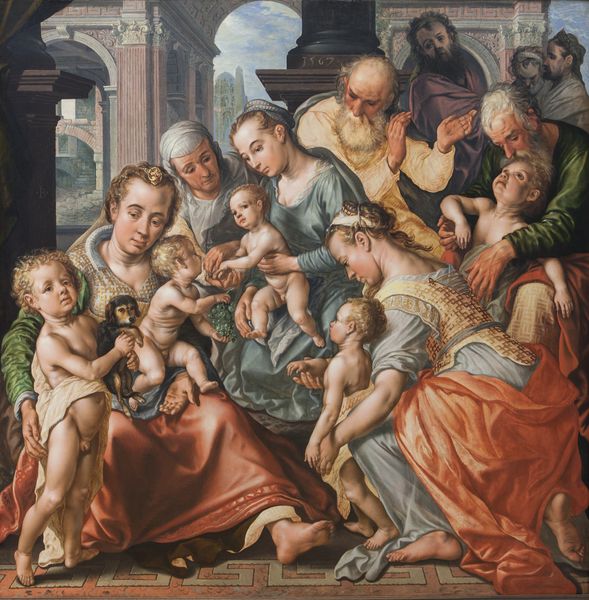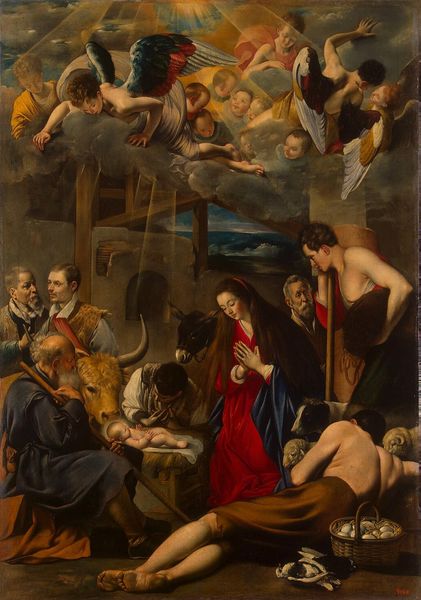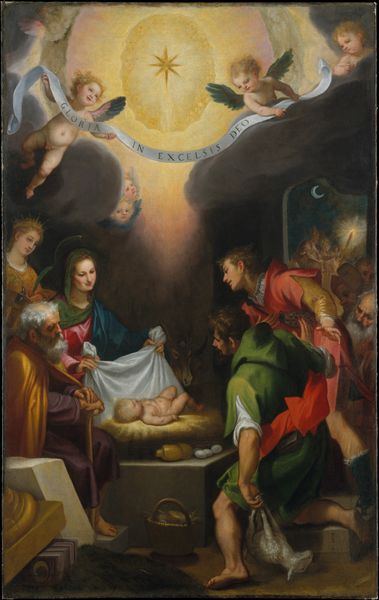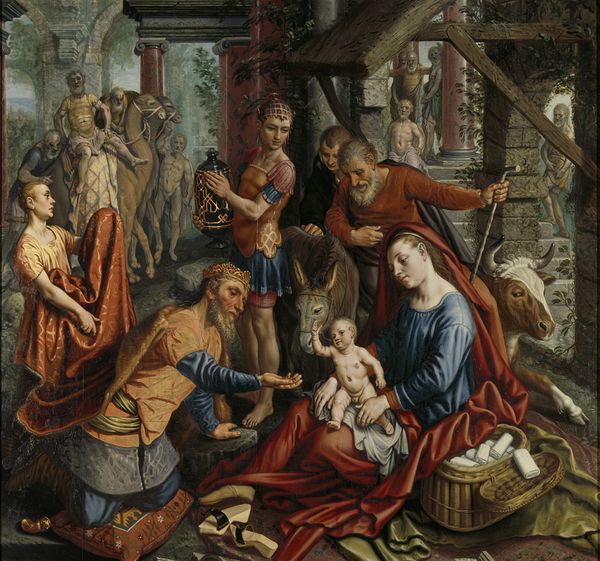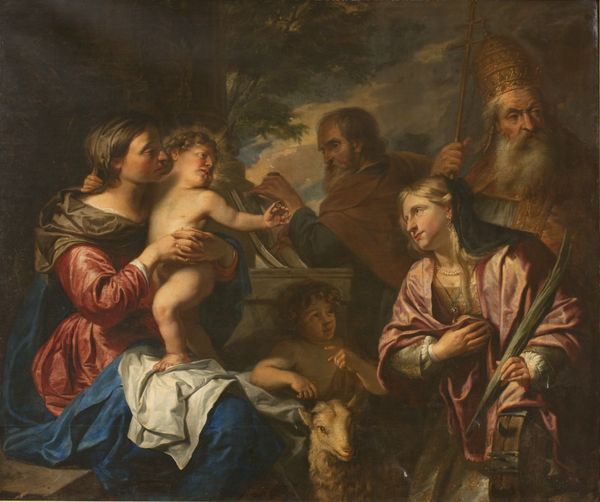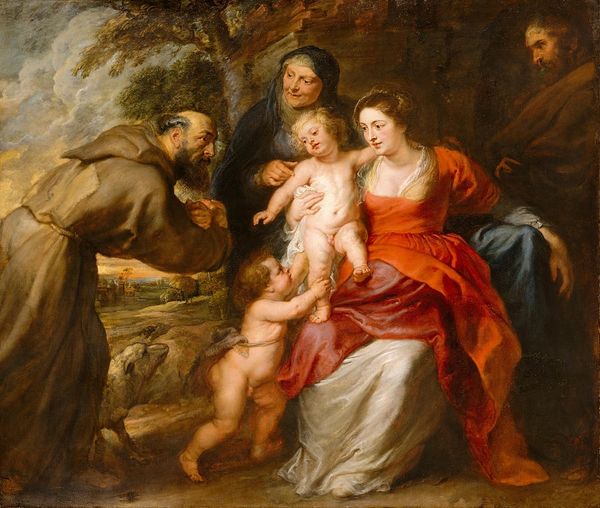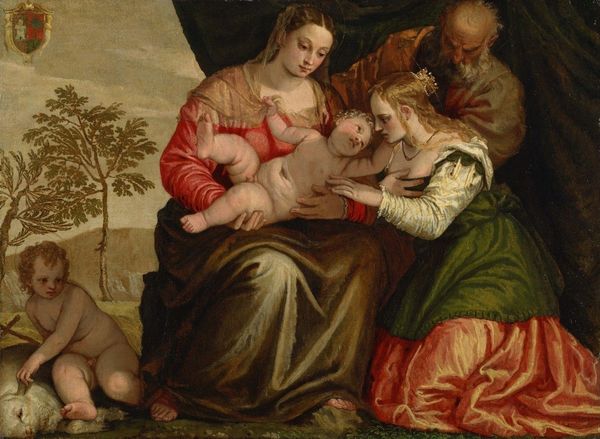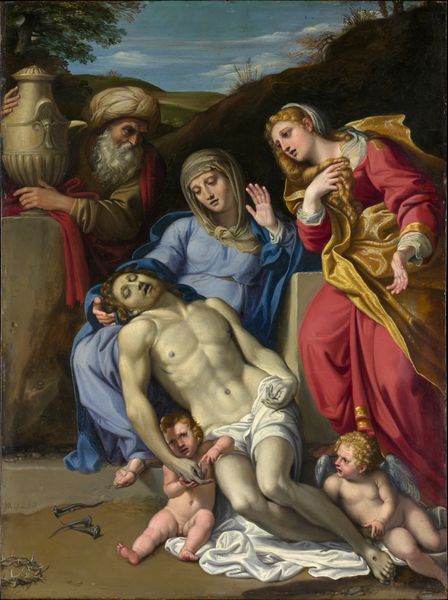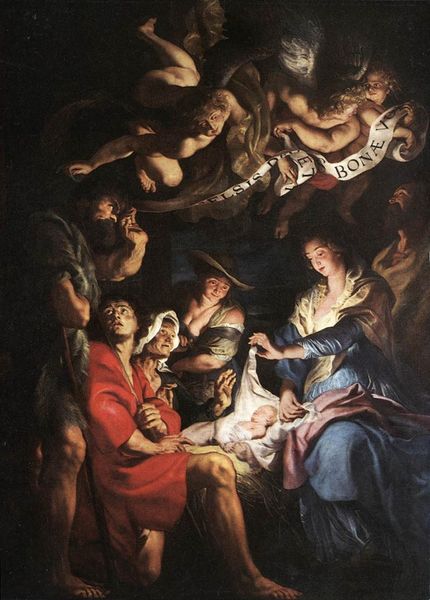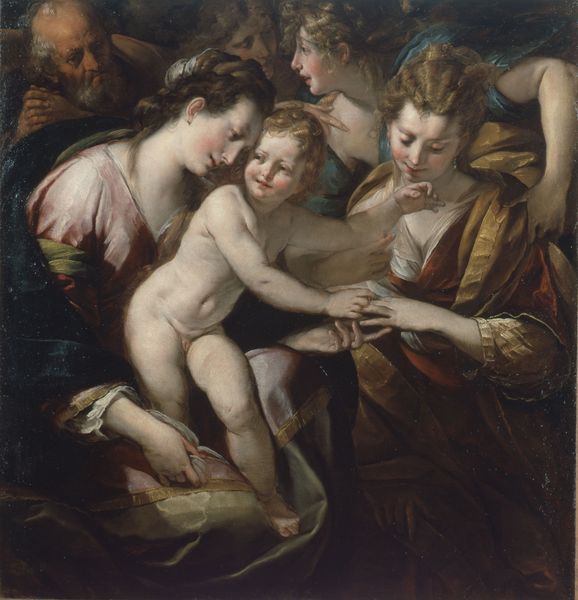
oil-paint
#
narrative-art
#
baroque
#
oil-paint
#
figuration
#
oil painting
Dimensions: support height 309 cm, support width 223.5 cm
Copyright: Rijks Museum: Open Domain
Curator: Gaspar de Crayer painted "The Adoration of the Shepherds" sometime between 1640 and 1650. You can see it here at the Rijksmuseum rendered in oil paint. Editor: Well, that's quite the staged event. Look at that dynamic composition—the upward gazes, the converging lines directing us to the baby Jesus. It's bathed in soft light and shadow; what can you tell me about the materials? Curator: It's oil on canvas. I think understanding its commission and production would offer key insights here. The painting would likely have been produced in de Crayer's studio, reflecting the division of labor common at the time. Who was it made for? Editor: You always bring it back to labour! What strikes me is how the earthly and divine realms seem effortlessly united. Angels hover, but the hay on the floor anchors everything firmly within our reach, and all brought to our eyes by line and shadow. The colors, too—muted yet vibrant, and do you see how de Crayer used that earthen pallet? Curator: Considering de Crayer's output and historical sources of pigment availability is essential. How would his workshop have been structured to achieve this palette, this contrast between divine figures with laborers and simple livestock? These shepherds; did they commissioned the painting perhaps? It reflects societal roles of the period. Editor: But see how he employs texture to amplify these class divisions! The rough texture of the shepherd's garments contrasts with the almost porcelain smoothness of the Christ child. He directs the eye where to look! The contrast does something interesting. It adds a tactile dimension, further separating them, even in devotion. Curator: Perhaps, but the materiality and value attributed to the canvas and pigment become key players in understanding this interplay of devotion and separation you see rendered by its colors. It highlights the production and, I dare say, the consumption of imagery in his historical context. Who paid? What for? And where was it shown, in candlelight? Editor: Very well. Regardless, seeing this union of color, light, and the positioning of figures allows us to dive into what must have inspired the commissioners or perhaps Gaspar himself when setting up such an engaging scene. I can understand his baroque treatment to inspire devotional emotions. Curator: These formal elements really point us to understanding a patron and studio context: social roles. Editor: Indeed. What better context than to find beauty through devotion?
Comments
No comments
Be the first to comment and join the conversation on the ultimate creative platform.
